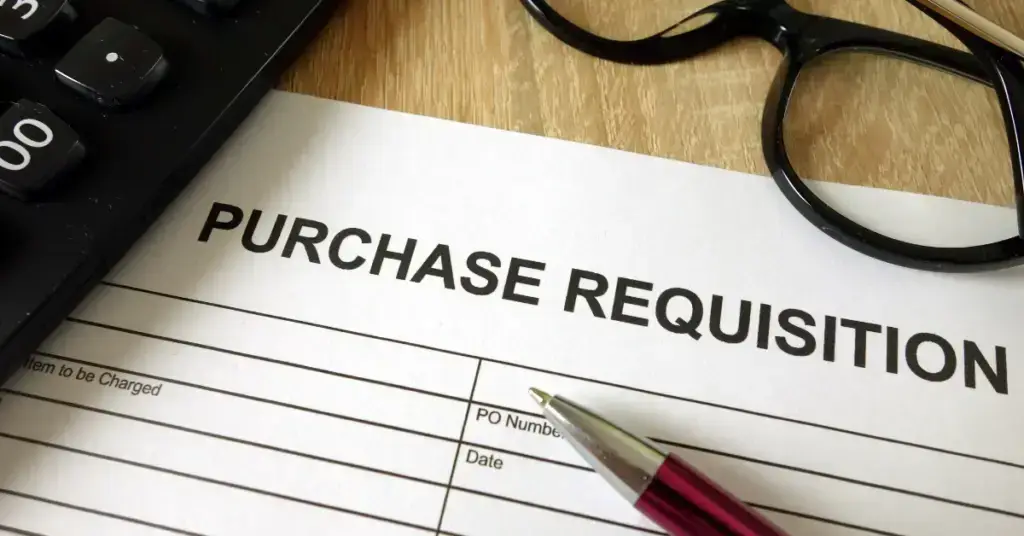In any business, managing purchases effectively is crucial to maintaining control over expenses and ensuring smooth operations. A key part of this process is the purchase requisition, a formal request for goods or services that initiates the procurement process. Understanding a purchase requisition, why it’s important, and how it works can significantly improve your organization’s purchasing efficiency and financial management. In this blog, we’ll explore the ins and outs of purchase requisitions, the benefits of automating this process, and how tools like Vencru can help streamline your procurement workflow. We’ll be discussing:
- What is a Purchase Requisition?
- Why Do Businesses Need Purchase Requisitions?
- How Do Purchase Requisition Work?
- What is Included in a Purchase Requisition?
- Challenges of Manual Purchase Requisition
- Benefits of Automating the Purchase Requisition Process
- How to Automate Your Purchase Requisition Workflow
What is a Purchase Requisition?

A purchase requisition is a formal request from an employee or department to procure goods or services. It is an internal document outlining the need for a purchase and initiating the procurement process. This document typically includes details such as the items needed, quantities, and any specific requirements or preferences.
In essence, it is a way for employees to communicate their purchasing needs to the procurement department or purchasing manager. It ensures that all purchases have approval, documentation, and alignment with the organization’s budget and policies.
Related Read: Purchase Requisition vs Purchase Order: Explained
Why Do Businesses Need Purchase Requisitions?
Businesses use purchase requisitions to streamline their procurement process and maintain control over their spending. Here are a few reasons why they are crucial:
- Budget Control: It helps monitor and control expenses by requiring approval before any purchase is made. This ensures that spending aligns with the budget.
- Approval Workflow: By having a structured approval process, purchase requisitions ensure that purchases are thoroughly reviewed and authorized by the appropriate personnel. Consequently, this reduces the risk of unauthorized spending.
- Documentation: It creates a formal record of requested items and services, which aids in tracking, auditing, and reporting.
- Inventory Management: They manage inventory levels by ensuring that purchases occur only when necessary, thus preventing overstocking or stockouts
- Supplier Management: It provides a basis for negotiating with suppliers and managing vendor relationships, as they outline the business’s specific needs.
How Do Purchase Requisitions Work?
The process of handling a purchase requisition typically involves several steps:
- Initiation: First, an employee or department identifies a need for goods or services and fills out a purchase requisition form. This form then details the required items, quantities, and any other specifications.
- Submission: The relevant authority reviews and approves the completed requisition form. This could be a supervisor, department head, or procurement manager.
- Review and Approval: The approver evaluates the requisition, ensuring that it aligns with the budget, company policies, and organizational needs. If approved, the requisition moves forward.
- Purchase Order Creation: After the approver approves the requisition, the system creates and sends a purchase order (PO) to the supplier. The PO includes all the details of the requested items and serves as a formal contract for the purchase.
- Receipt and Inspection: After receiving the goods or services, the organization inspects them to ensure they meet the required specifications. Any discrepancies are addressed with the supplier.
- Invoice Processing: The supplier sends an invoice for payment. The system matches the invoice against the purchase order and delivery receipt to confirm accuracy before processing payment.
- Record Keeping: For record keeping, file the purchase requisition, PO, receipt, and invoice for future reference and auditing purposes.
Related Read: What Is a Purchase Order?
What Is Included in a Purchase Requisition?

A comprehensive purchase requisition typically includes the following information:
- Requester Details: The name, department, and contact information of the person making the request.
- Item Description: A detailed description of the goods or services needed, including specifications, part numbers, or model numbers.
- Quantity: The number of items or the volume of services required.
- Preferred Supplier: If applicable, the name of the preferred supplier or vendor.
- Delivery Date: The required date by which the goods or services are needed.
- Budget Information: Relevant budget codes or account numbers to ensure the purchase is within financial limits.
- Approval Signatures: Spaces for signatures or electronic approvals from the necessary authorities.
- Comments or Special Instructions: Any additional notes or specific instructions related to the request.
Challenges of Manual Purchase Requisition Workflow
Manual purchase requisition workflows can present several challenges:
- Inefficiency: Manual processes can be slow and prone to errors, which often leads to delays in approvals and order fulfillment.
- Lack of Visibility: It can be difficult to track the status of requisitions and purchase orders. Consequently, this hampers transparency and decision-making.
- Errors and Duplication: Manual data entry increases the risk of errors and duplicate requests. As a result, this can lead to financial discrepancies.
- Compliance Issues: Ensuring compliance with budgetary constraints and procurement policies can be challenging without automated checks.
- Paper-Based Records: Physical documentation is prone to loss or damage, making record-keeping and audits more cumbersome.
Benefits of Automating the Purchase Requisition Process

Automating the purchase requisition process can address many of the challenges associated with manual workflows:
- Increased Efficiency: Automated systems speed up the approval process, reducing delays and improving overall efficiency.
- Enhanced Visibility: Automation provides real-time tracking and reporting; consequently, it offers better visibility into the status of requisitions and purchase orders.
- Error Reduction: Automated data entry and validation reduce the risk of errors and duplicate requests. As a result, this leads to more accurate records.
- Improved Compliance: Automated systems ensure adherence to budgetary and procurement policies through built-in controls and approvals. Consequently, this enhances compliance and minimizes the risk of policy breaches.
- Streamlined Record-Keeping: Digital records are easier to manage, access, and secure, simplifying audits and reducing the risk of loss.
Related Read: Top 5 Purchase Order Systems for Retailers
Purchase Requisition Example
Consider a company’s IT department needing to purchase new laptops. The process might look like this:
- Initiation: The IT manager identifies the need for 10 new laptops and fills out a purchase requisition form.
- Submission: The form is submitted to the finance department for review.
- Review and Approval: The finance manager checks the request against the budget and approves it.
- Purchase Order Creation: The team creates and sends a purchase order to the preferred laptop supplier.
- Receipt and Inspection: The team receives and inspects the laptops for quality, confirming they match the order.
- Invoice Processing: The supplier sends an invoice, matched with the purchase order and delivery receipt.
- Payment: The invoice is processed, and payment is made to the supplier.
How to Automate Your Purchase Requisition Workflow
Automating your workflow can significantly improve efficiency and accuracy. Here’s how you can do it:
- Choose the Right Software: Start by selecting an automation tool or software that fits your organization’s needs. Additionally, look for features such as workflow automation, approval routing, and integration with other systems.
- Set Up Approval Workflows: Next, configure the software to reflect your organization’s approval hierarchy and rules. This setup ensures that requisitions are reviewed and authorized correctly, aligning with your internal processes.
- Digitize Requisition Forms: Use digital forms to capture and submit requisition details. Ensure these forms include all necessary fields and validations.
- Integrate with Financial Systems: Then, connect your automation tool with financial systems to streamline budget checks, invoice processing, and payment. This integration enhances efficiency and ensures seamless financial management.
- Train Your Team: Train employees and managers on how to use the new system effectively. This ensures smooth adoption and minimizes disruptions.
- Monitor and Optimize: Regularly review the automated process to identify any issues or areas for improvement. Adjust as needed to enhance efficiency.
Related Read: Invoice Vs Purchase Order: What’s The Difference?
Conclusion
A purchase requisition is a critical component of the procurement process, helping businesses control spending, streamline approvals, and maintain accurate records. Businesses can better manage their purchasing needs by understanding what it is and how it works.
Moreover, automating the workflow offers numerous benefits, including increased efficiency, reduced errors, and improved compliance. By leveraging automation tools, organizations can enhance their procurement processes and achieve greater control over their spending.
Manage your Inventory and Accounting Process today with Vencru!
Related Content






